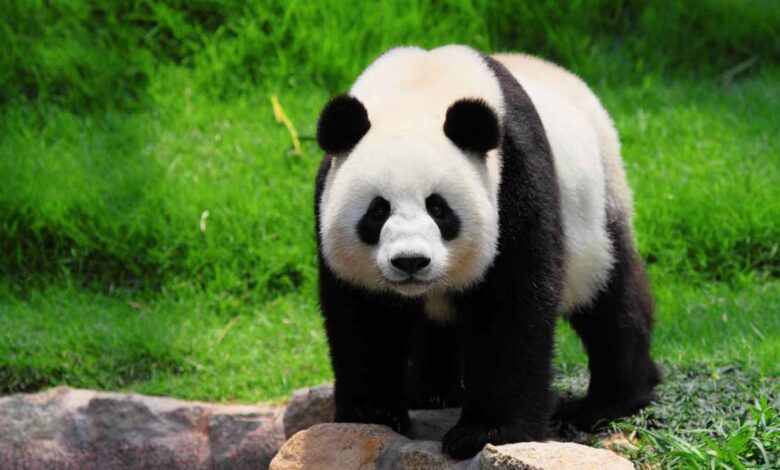Giant Pandas: The Adorable Bears of China

Giant pandas are one of the most beloved animals in the world. They are known for their distinctive black and white fur, their love of bamboo, and their clumsy yet endearing behavior.
Table of Contents
Scientific Name
Giant pandas, scientifically referred to as Ailuropoda melanoleuca, are a species of bear belonging to the Ursidae family. They are recognized for their distinctive black and white fur patterns and are endemic to certain regions of China.
Unique Features
Giant pandas are instantly recognizable due to their striking black and white coloration. Their round faces, black-rimmed eyes, and chubby bodies make them one of the most iconic and beloved animals in the world.
Evolutionary History
Giant pandas have a fascinating evolutionary history. While they are classified as carnivores, their diet primarily consists of bamboo. This shift in diet has influenced their physical characteristics, including their specialized wrist bone that functions like a thumb to grasp bamboo.

Bamboo-Based Diet
Bamboo constitutes over 99% of a giant panda’s diet. Despite being members of the bear family, pandas have adapted to thrive on a diet that is primarily herbivorous. They consume a substantial amount of bamboo daily to meet their energy requirements.
Behavior
Giant pandas are known for their solitary and docile nature. They spend a significant portion of their day feeding, moving slowly through bamboo forests in search of their favorite food. Pandas are also skilled climbers and swimmers, and their physical adaptations reflect their specialized lifestyle.
Habitat
Native to the mountainous regions of central China, giant pandas inhabit bamboo forests at elevations between 5,000 to 10,000 feet. These dense and misty forests provide the ideal environment for pandas to forage and seek shelter.
Conservation Efforts
Giant pandas have faced threats to their survival, including habitat loss and low reproduction rates. However, dedicated conservation efforts have led to positive results. Conservation programs, such as habitat protection and captive breeding, have contributed to the gradual increase in panda populations.

Reproduction and Cubs
Giant pandas have a relatively low reproductive rate. Female pandas ovulate only once a year, and successful breeding can be a complex process. Pregnancies result in the birth of one or two tiny cubs, which are born blind and helpless. Mother pandas care for their cubs diligently, ensuring their survival in the challenging early stages of life.
Lifespan
In the wild, giant pandas have an average lifespan of 20 to 30 years. Pandas in captivity often live longer, with some individuals reaching their early 40s. Improved care, medical attention, and controlled environments contribute to the extended lifespan of captive pandas.
Conclusion
Giant pandas are emblematic creatures that have captured our hearts with their unique appearance and charming behaviors. As we continue to learn more about these enigmatic animals and work to protect their habitats, we ensure a brighter future for these beloved bamboo connoisseurs.
FAQs about Giant Pandas
1– Why are pandas black and white?
Pandas’ distinct coloration provides camouflage in their forest habitat and may serve social communication purposes.
2– Can pandas eat anything other than bamboo?
While bamboo is their primary food source, pandas have been known to consume small mammals and birds on occasion.
3– How do pandas communicate with each other?
Pandas communicate through vocalizations, scent marking, and body language.
4– Are giant pandas endangered?
Giant pandas were classified as endangered, but conservation efforts have led to an improved status, with the IUCN recently changing their status to “vulnerable.”
5– Can giant pandas reproduce in captivity?
Yes, captive breeding programs have been successful in increasing panda populations and supporting conservation.


